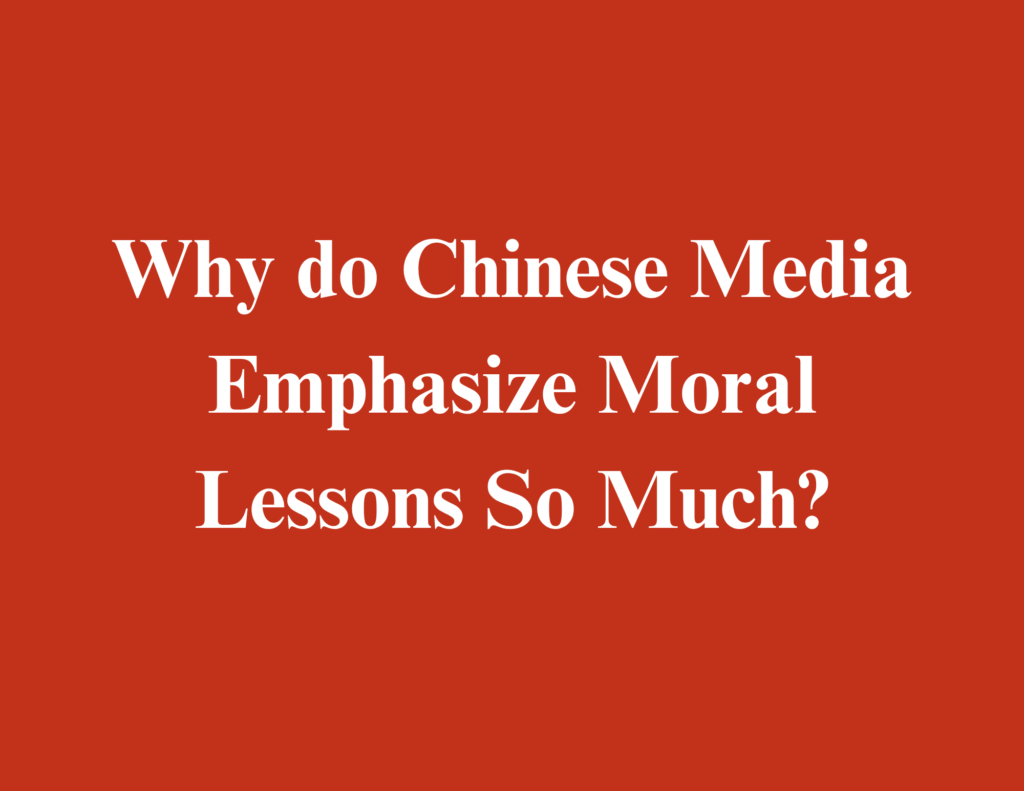
In the landscape of Chinese media, moral messages are not just common—they’re foundational. Whether in a primetime drama or a children’s cartoon, narratives often go beyond entertainment to reinforce collective values and social ideals. But why is this moral emphasis so persistent, and what shapes it? This article explores the cultural, political, and audience-based factors behind China’s enduring preference for media with a moral core.
I. What Role Does Morality Play in Chinese Media Content?
Moral lessons are deeply embedded in China’s mainstream content. Television dramas frequently focus on stories of justice, loyalty, and perseverance. Children’s programs often deliver clear, digestible values such as respect for elders or the importance of honesty. News reporting, too, tends to highlight stories of personal sacrifice, community cooperation, and civic responsibility.
In family-targeted programming, entertainment is often balanced with didacticism. Whether it’s a high school romance with lessons on perseverance or a variety show that rewards good deeds, the underlying message is usually clear: doing good matters.
II. How Does Traditional Philosophy Shape Storytelling in China?
Confucianism plays a lasting role in shaping how stories are told. Core Confucian values like filial piety, righteousness, and social harmony are reflected in plotlines where characters are rewarded for loyalty or punished for betrayal.
This philosophical heritage favors narratives with moral clarity. Heroes are expected to embody virtue, while villains ultimately face consequences. The idea of the group often takes precedence over the individual, and stories tend to elevate collective wellbeing over personal rebellion or disruption.
III. How Do Government Policy and Censorship Shape the Moral Tone of Media?
Regulatory guidelines by the National Radio and Television Administration (NRTA) encourage content that promotes “positive energy” and “correct values.” This includes celebrating national pride, hard work, kindness, and civic virtue.
Producers are expected to align with these standards if they want approval for broadcast or online distribution. As a result, moral tone becomes not only a creative choice but also a strategic necessity in gaining regulatory approval.
IV. Are Audience Preferences Also Influencing This Trend?
The emphasis on morality isn’t solely top-down. Older audiences in particular express a preference for stories that reinforce social values and provide emotional reassurance. This demand fuels the popularity of “main melody” dramas—shows that emphasize patriotism, responsibility, and resilience.
China’s education system also contributes. From a young age, students are exposed to texts and media that celebrate moral clarity and upright behavior, cultivating a natural expectation for media to inspire, uplift, or teach.
Even in youth idol dramas, themes of hard work, teamwork, and emotional integrity are subtly woven into otherwise light entertainment.
V. What Are the Criticisms and Evolving Trends in This Landscape?
There’s a growing conversation around the limitations of overt moral messaging. Some critics argue that it can lead to flat characters, predictable plots, and a lack of creative risk. Younger audiences, exposed to global storytelling through streaming platforms, increasingly seek narratives with moral complexity and personal nuance.
Independent creators and niche platforms are beginning to explore alternative perspectives—stories that allow for ambiguity, introspection, and conflict without a clear moral takeaway.
Conclusion: Is Moral Emphasis a Cultural Strength or a Creative Limitation?
Moral storytelling in Chinese media is both a reflection of cultural values and a product of political guidance. It offers social cohesion, emotional comfort, and a clear ethical framework. But it also raises important questions about artistic freedom and narrative diversity.
As audiences diversify and global influences grow, the future of Chinese media may rest in its ability to maintain moral depth while embracing creative complexity. Morality, after all, can be both a guiding light—and a canvas for more nuanced, human stories.